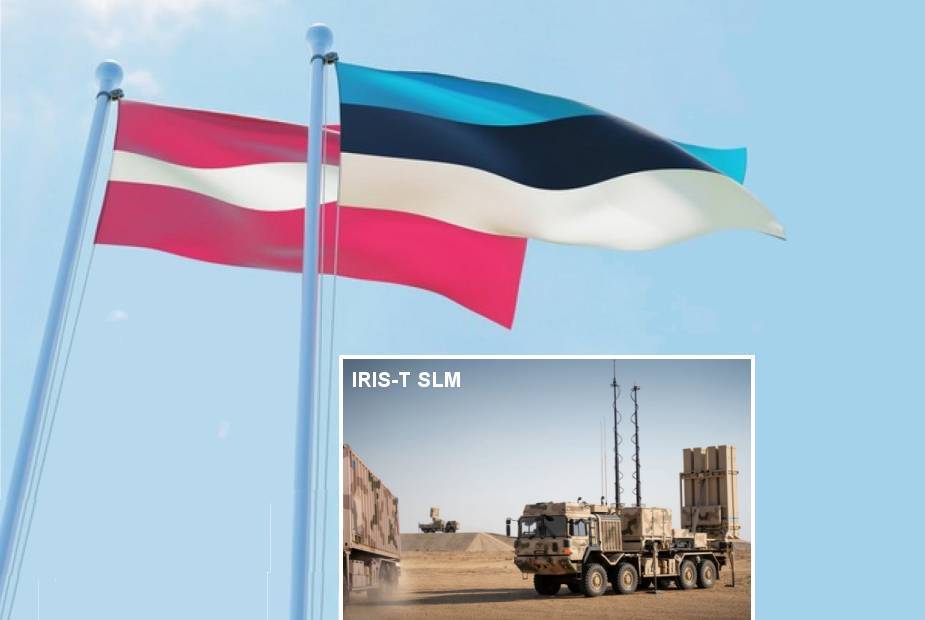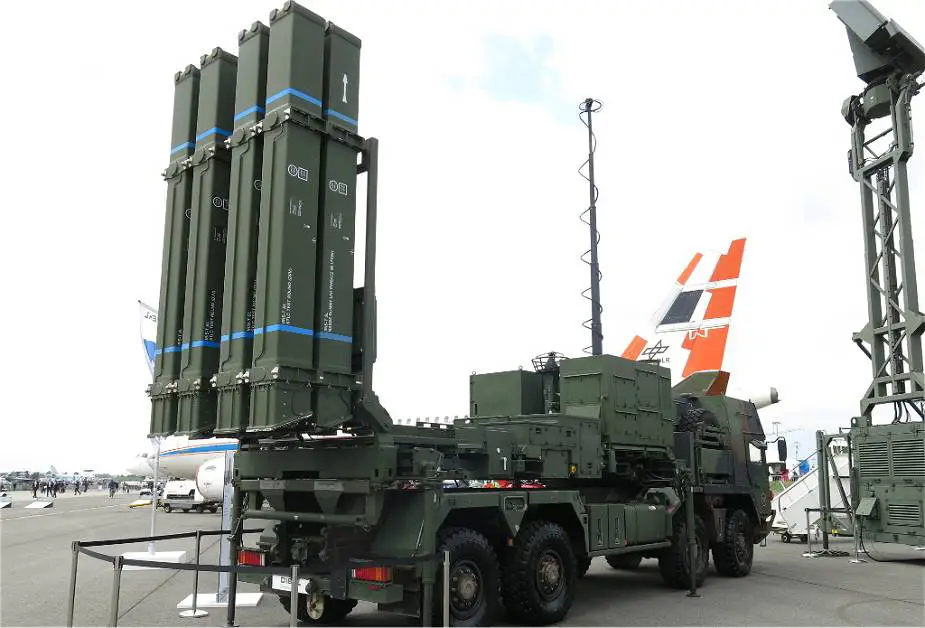According to a statement published by the Estonian Ministry of Defense on May 21, 2023, Estonia and Latvia are set to begin negotiations with Diehl Defence, a German arms producer, for the acquisition of the Iris-T SLM air defense missile system. This procurement decision was unveiled in Riga by Defence Ministers Hanno Pevkur of Estonia and Ināra Mūrniece of Latvia.
Follow Army Recognition on Google News at this link

Estonia and Latvia are set to begin negotiations with Diehl Defence, a German arms producer, for the acquisition of the Iris-T SLM air defense missile system.
Pevkur expressed his enthusiasm for this joint procurement effort, labeling it a historic stride in defense cooperation between Estonia and Latvia. The hope is that successful negotiations will lead to a finalized contract and the announcement of the official winning bidder by the upcoming summer, stated Pevkur.
Latvia's Minister of Defence, Ināra Mūrniece, emphasized that the selected medium-range air defense system would enhance the security of both nations' airspace and offer maximum possible protection for citizens and military as well as civilian infrastructure.
The initial Letter of Intent for joint procurement of medium-range air defense was signed in June 2022, during the NATO Summit in Madrid. The Estonian Centre for Defence Investment (RKIK) has spearheaded this process since signing an agreement with the Estonian Ministry of Defence last July.
Pevkur further noted the objective to operationalize the medium-range air defense capabilities for Estonia by 2025, indicating that the first systems should be delivered by 2024. The Estonian government has allocated funds for this procurement in its 2022 budget.
The RKIK performed comprehensive market research among potential bidders, scrutinizing offers from six international companies. The selection process considered various evaluation criteria, including technical system capacity, total and life cycle costs for the next 30 years, delivery time, and potential for local industry involvement.
The final investment cost will be settled during contract negotiations. The capacity procurement includes not only the medium-range air defense system but also associated infrastructure, personnel, training, equipment, and other related expenses.

The IRIS-T SLM is the medium-range version of the IRIS-T SL air defense missile system designed and produced by the German company Diehl Defense. (Picture source Wikimedia)
The Iris-T SLM (Surface Launched Medium Range) is an innovative ground-based air defense system from Diehl Defence, a top-tier German arms manufacturer. It's an evolution of the Iris-T air-to-air missile, renowned for its successful deployment by multiple air forces globally.
Designed to tackle a wide variety of targets, the Iris-T SLM can effectively neutralize aircraft, helicopters, unmanned aerial vehicles (UAVs), and cruise missiles. Its medium-range engagement capacity makes it ideally suited for area defense and high-value asset protection. This versatility is of particular importance in response to the evolving landscape of contemporary air threats, encompassing stealth aircraft and low-flying missiles.
One of the defining features of the Iris-T SLM is its cutting-edge infrared homing guidance system, contributing to its high precision and reliability. This air defense system also displays a remarkable level of adaptability thanks to its compatibility with existing command and control systems. This makes it a cost-effective upgrade, enabling enhanced defense capabilities without the need for substantial new infrastructure. Furthermore, the system’s modular design allows for scalability and adjustments in line with the specific operational requirements or budgetary constraints.
The IRIS-T SLM missile has the capability to destroy aircraft, helicopters, cruise missiles, air-to-surface missiles, anti-ship missiles, anti-radar rockets, and large-caliber rockets. it also has a high probability of a killing shot against UAVs and other small maneuvering threats. It has a maximum firing range of 40 km at an altitude of up to 20 km.















